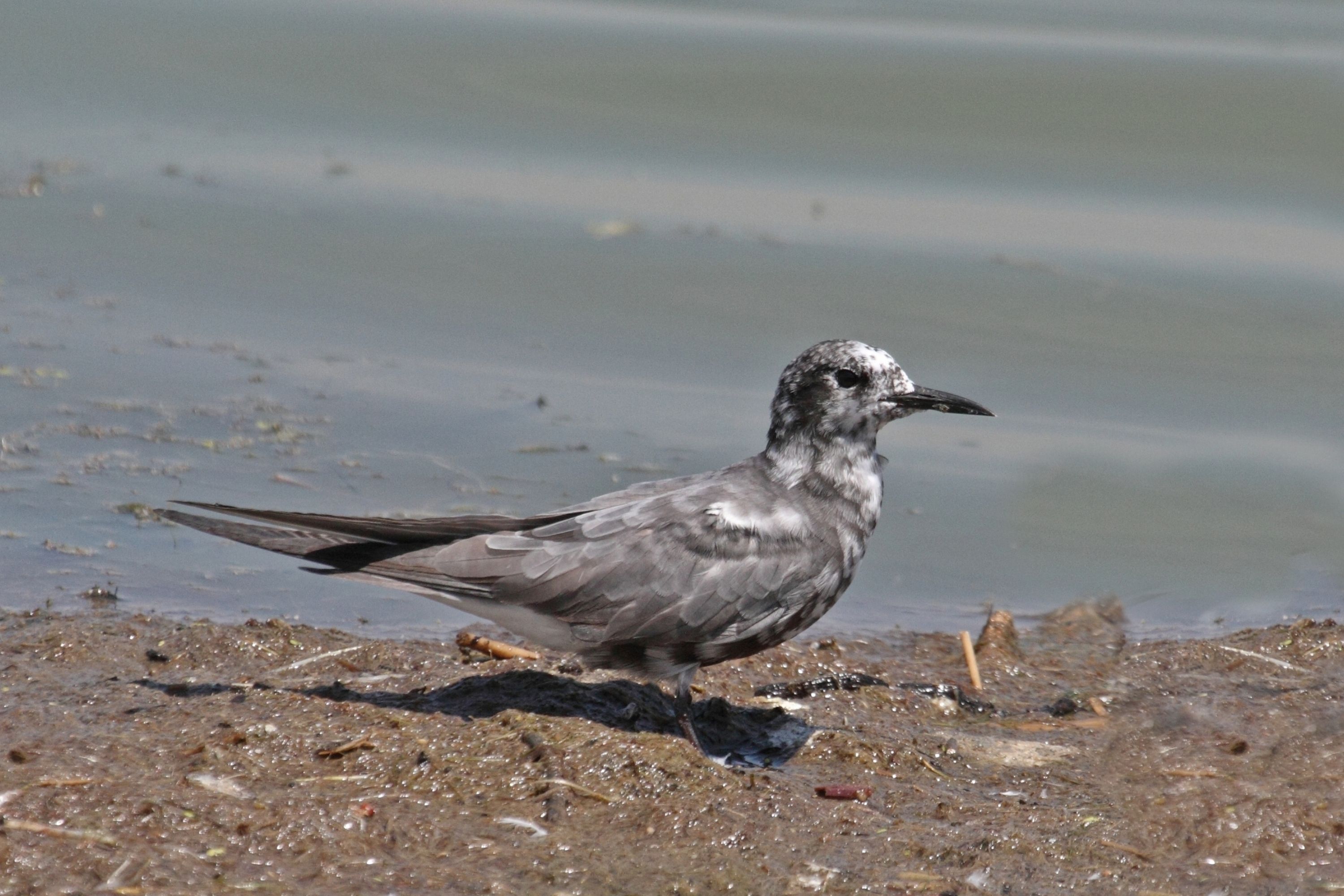Black tern
(Chlidonias niger)

Description
The black tern (Chlidonias niger) is a small tern generally found in or near inland water in Europe, Western Asia and North America. As its name suggests, it has predominantly dark plumage. In some lights it can appear blue in the breeding season, hence the old English name "blue darr". The genus name is from Ancient Greek khelidonios, "swallow-like", from khelidon, "swallow": another old English name for the black tern is "carr (i.e. lake) swallow". The species name is from Latin niger "shining black". Adults are 25 cm (10 in) long, with a wingspan 61 cm (24 in), and weigh 62 g (2+1⁄8 oz). They have short dark legs and a short, weak-looking black bill, measuring 27 mm (1+1⁄16 in), nearly as long as the head. The bill is long, slender, and looks slightly decurved. They have a dark grey back, with a white forewing, black head, neck (occasionally suffused with grey in the adult) and belly, black or blackish-brown cap (which unites in color with the ear coverts, forming an almost complete hood), and a light brownish-grey, 'square' tail. The face is white. There is a big dark triangular patch in front of the eye, and a broadish white collar in juveniles. There are greyish-brown smudges on the ides of the white breast, a downwards extension of the plumage of the upperparts. These marks vary in size and are not conspicuous. In non-breeding plumage, most of the black, apart from the cap, is replaced by grey. The plumage of the upperparts is drab, with pale feather-edgings. The rump is brownish-grey. The North American race, C. n. surinamensis, is distinguishable from the European form in all plumages, and is considered by some to be a separate species. In flight, the build appears slim. The wing-beats are full and dynamic, and flight is often erratic as it dives to the surface for food; similar to other tern species. Its call has been described as a high-pitched "kik"; the sound of a large flock has been called "deafening". Their breeding habitat is freshwater marshes across most of Canada, the northern United States and much of Europe and western Asia. They usually nest either on floating material in a marsh or on the ground very close to water, laying 2–4 eggs. In England the black tern was abundant in the eastern Fens, especially in Lincolnshire and Cambridgeshire, until the early nineteenth century. The English naturalist Thomas Pennant in 1769 referred to "vast flocks" of black terns "whose calls are almost deafening."
Taxonomic tree:







